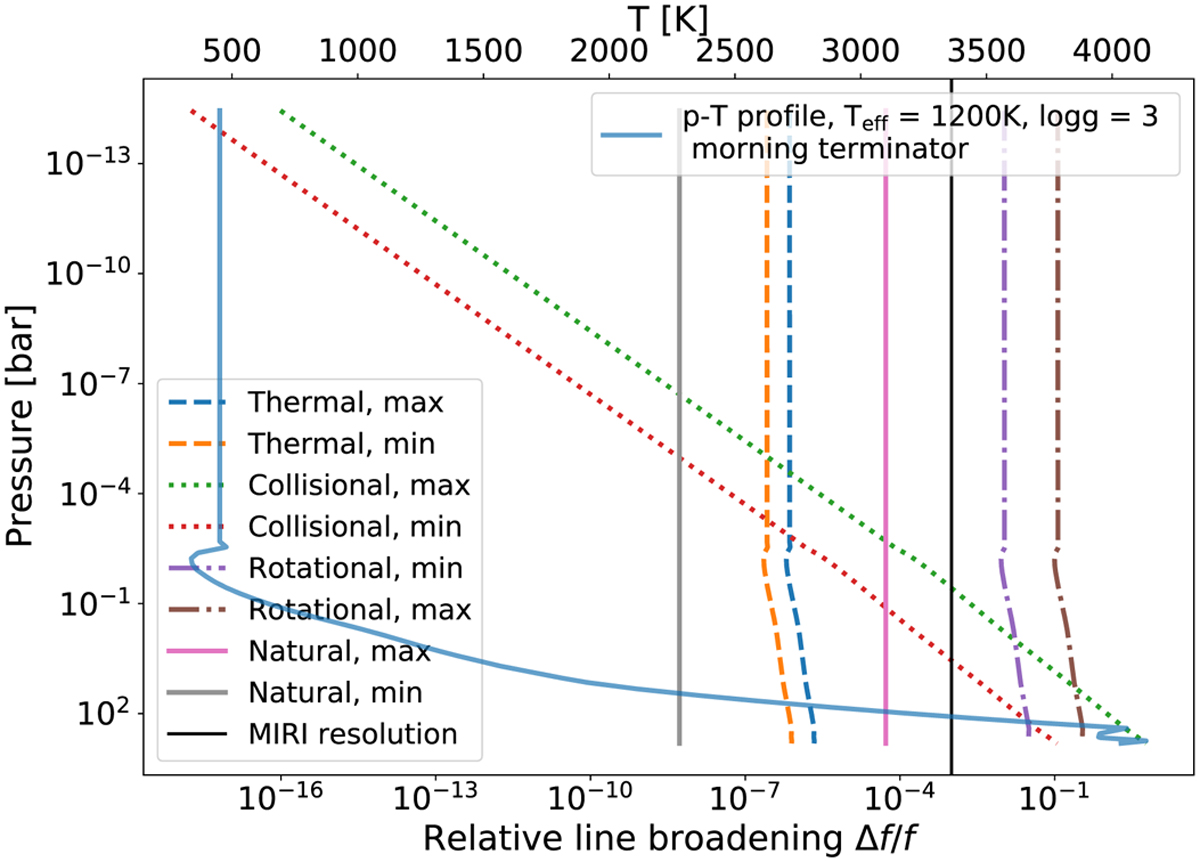Fig. 1

Download original image
Comparison of the considered broadening mechanisms along a (pgas, Tgas) profile. All broadening mechanisms are evaluated for their potential minimum and maximum contribution. Thermal broadening is weakest for large clusters (N = 15, ‘Thermal, min’) and strongest for small clusters (N = 1, ‘Thermal, max’). Collisional broadening is weakest for small clusters at high frequencies (N = 1, λ = 10 µm, ‘Collisional, min’) and strongest for large clusters at low frequencies (N = 15, λ = 100 µm, ‘Collisional, max’). Rotational broadening is weakest for large clusters (N = 15, ‘Rotational, min’) and strongest for small clusters (N = 1, ‘Rotational, max’). Natural broadening is weakest for long state life-times at high frequency (τ = 1µs, λ = 10 µm, ‘Natural, min’) and strongest for short state life-times at low frequency (τ = 1ns, λ = 100 µm, ‘Natural, max’). The T(p) profile is one of the WASP-96b-like profiles from Sect. 2.3.
Current usage metrics show cumulative count of Article Views (full-text article views including HTML views, PDF and ePub downloads, according to the available data) and Abstracts Views on Vision4Press platform.
Data correspond to usage on the plateform after 2015. The current usage metrics is available 48-96 hours after online publication and is updated daily on week days.
Initial download of the metrics may take a while.


